Papers by PETUR HALLDORSSON
Mynd 2. Clontarfkastali á Liffey í Dublin Írlandi er í 108,000 feta fjarlaegð frá Tara. Bardaginn... more Mynd 2. Clontarfkastali á Liffey í Dublin Írlandi er í 108,000 feta fjarlaegð frá Tara. Bardaginn fór fram við sólarupprás á vetrarsólstöðum. (5). Þar sigraði norraent-írskt bandalag konungsaett Írlands og batt enda á gaelíska kristni. Í írskum annálum er Brjánsbardagi einn merkasti atburður írskrar sögu.

This pattern was first revealed in the Ranga river plain in Iceland (ref. 1). Modern maps and sol... more This pattern was first revealed in the Ranga river plain in Iceland (ref. 1). Modern maps and solar positions show the alignment of settlement landmarks on specific days, and the diameter of a landform 216,000 feet (about 66 km). The historic assassination of the Njal clan by arson, at the winter solstice sunset landmark of Bergthórshvol (2), is the main event in the Njál's Saga. The same kind of event occurred, at the same kind of landmark, in West Iceland at Baer in Borgarfjord (5). 2 Civil reform, unrest, and war at cosmic image border Petur Halldorsson
Certain structures tend to be built, and some decisive events tend to occur, at four sunrise and sunset horizon landmarks, and in the centre field, of every initial civil land survey. These sites tend to be spaced in the same pattern, inside and on the rim of a diameter of 216,000 feet (10.8 km), forming a cosmic image of space and time.
Delta’s cultures
This paper is a story from the Po delta in north Italy with reference to the del... more Delta’s cultures
This paper is a story from the Po delta in north Italy with reference to the deltas of Thames, and south Iceland.
The Thames and Pó deltas were the choice stages for Shakespeare’s work; the South Iceland delta produced Sagas like the epic, Njáls saga, which describes events and allegoric tales between 960 and 1020 and survives in around 60 manuscripts.
From a specific vantage point people gazed at a certain hill on the delta’s south-west horizon where the winter solstice sunset was. Calendars were made according to it. Gothic kings and bishops lived on that hill.
Petur Halldorsson, 2023
Winter solstice sunrise in South Iceland as seen from the early sun watch Cosmogram and its compa... more Winter solstice sunrise in South Iceland as seen from the early sun watch Cosmogram and its comparison with similar sun watch Cosmograms in Europe and N. Africa.
Goðsögur Goðasteins "Fremstur þeirra sem voru þversum gegn kristnun var Runólfur goði Úlfsson faðir Úlfs og Valgarðs föðurs Marðar. Hann var undan Hrafni heimska og Haraldi hilditönn. Hof hans var í Fljótshlíðinni. Runólfur var faeddur árið 950, hann varð 65 ára gamall. Foreldrar hans voru Úlfur örgoði (Jörundarson goða, Hrafnssonar) og kona hans ónefnd, dóttir Vála Loðmundarsonar gamla í Sólheimum í Mýrdal. Runólfur maelti manna mest gegn kristnitökunni en var þó skírður. Hann bjó í Dal Undir Eyjafjöllum. Kona hans ónefnd var dóttir Þórðar gellis frá Hvammi í Dölum. Börn þeirra; Svertingur, Gellir og Þuríður sem átti Þorkel lögsögumann Tjörvason sonarson Þorgeirs Ljósvetningagoða.
The Colosseum in Rome erected as the concept of the victors Valhalla. Valholl is featured in Edda... more The Colosseum in Rome erected as the concept of the victors Valhalla. Valholl is featured in Edda's Grimnismál as a symbol of the Universe.
Petur Halldorsson, 2023
The Cube of Creation:
Hexagon’s plan view becomes a 3D cube, when the 8th point behind 7th point... more The Cube of Creation:
Hexagon’s plan view becomes a 3D cube, when the 8th point behind 7th point is perceived (Fig 1).
Hebrew gematria reveals creation of heavens and earth as the volume of 2701, 3 x 3 x 3 +1. The Cube of Creation dimensions in a Cosmic image centre symbolises orientation, administrative centre, and World’s proportions in a human horizon as 36,000 x 36,000 feet. It is tempting to see the cube’s numbers as rising from the same root, as a key to the archetypal meaning of matter, energy, and nature themselves, and to see culture as an extension of nature. What one of the oldest Icelandic parchments Algorismus notes as the Cube of “stability and persistence”, deeply rooted in the psyche.
Petur Halldorsson, 2023
The Firth of Forth on the east coast of Scotland was formed by a melting glacier at the end of th... more The Firth of Forth on the east coast of Scotland was formed by a melting glacier at the end of the last glacial period, about 115,000 to 11,700 B.C. Scottish 'firth' follows the Norse word fjord, and Forth is the name of this wide, slow-flowing fjord, after Voritia in Celtic. The massive fjord on the north of Scotland's capital was named Bodotria in Roman times, and in Nordic sagas it was Myrkvifjörd, Dark fjord. Regularly spaced landmarks around Edinburgh indicate that the usual cosmic image, 216,000 feet in diameter, was surveyed here by early setters. 1
PETUR HALLDORSSON, 2023
Þorlákur teningur Í fornri speki Gyðinga er upphafleg hugmynd tenings skilgreind sem táknmynd alm... more Þorlákur teningur Í fornri speki Gyðinga er upphafleg hugmynd tenings skilgreind sem táknmynd almaettis runnin af einum punkti: Sex punktar ummáls tákna sex daga sköpunar. Punkturinn í miðju er hvíldardagurinn. Sex línur binda punktana við miðju. Í myndinni eru í raun átta horn tenings en þar sjást bara sjö af því áttunda hornið er að baki því sjöunda og sést ekki. Sex ytri punktar merkja hina sjáanlegu guðlegu mynd, sá sjöundi, miðpunkturinn er guðdómurinn. Áttundi, ósýnilegi punkturinn er nauðsynlegur til að fullkomna teninginn. Þegar augað sér þrívídd teningsins skynjar það augnablik fullkominnar sköpunar. Hexagon er flatarmynd tenings.
ICONEA the London University, 2022
I remember nine worlds, nine vast spaces and a fine measuring rod beneath the soil. Sybil's proph... more I remember nine worlds, nine vast spaces and a fine measuring rod beneath the soil. Sybil's prophecy. (Völuspá second verse).
Through the centuries, nations staked claim to land through measurements and calculations based on a legacy of ancient tales, religious ideas and stars. These features served to connect people to their lands, to the motions of the firmament, and to higher powers.
Among the basic tools of the pagan system were angles, distances, and numbers themselves, in a base-12 numerical system involving 60. Among the key documents to unlock modern access to the integrative pagan survey system and world view, are the Icelandic sagas.
London’s cosmic image , 2022
Around London in the Thames River delta, lies the remnants of a prehistoric cosmic image, 216.000... more Around London in the Thames River delta, lies the remnants of a prehistoric cosmic image, 216.000 feet in diameter, with a central square field of 36.000 feet south of the centre point at Coppetts Wood.
I propose the cosmology (cosmic image) of the Thames delta, was an orientation device and a system for counting days and seasons. It was a sun watch which was in use for thousands of years, and well into the christian era.
The roots of Icelandic culture lie deep in Europe. The Icelandic pagan settlement seems to have f... more The roots of Icelandic culture lie deep in Europe. The Icelandic pagan settlement seems to have followed basic principles of settlements such as Greece, Egypt, England. A cosmic image was a system settlers must have known long before BC. It was at once sacred and a practical sun watch. The geocentric model that places Earth at the center of the Universe is steeped in its philosophy. The cosmic image can be used for comparing early settlements anywhere in the world.
Sólsetur á sumarsólstöðu var eitt helgasta tákn fornmanna.
Það er margt sem bendir til þess ... more Sólsetur á sumarsólstöðu var eitt helgasta tákn fornmanna.
Það er margt sem bendir til þess að landnám á Íslandi og síðar kristnun hafi leitt af sér rit um heiðna siði.
Heimsmyndir líkt hverfðust um miðju. Frá miðju heimskringlu Egils Skallagrímssonar á vesturlandi var hægt að merkja bæði rómverska heimsmynd sem skiptir sjónhring í fjóra jafna hluta og keltneska heimsmynd árstíða. Heimsmyndirnar voru varðaðar helstu höfuðbólum Vesturlands.
The 16th century Atlantic coast of north America extended from British protected Florida to Briti... more The 16th century Atlantic coast of north America extended from British protected Florida to British protected Quebeck. In the center of this 2000 km shore line, Maryland and Virginia were drawn on the map. Between them on the banks of the Potomac river, was the gate into the wild west. That is where first Europeans in the New World, designed their federal city within a sacred geometry of classic European kingdoms. We may surmise further: Many indications suggest that before unoccupied land was settled, it was paced and sized up. Virgin land was measured with exquisite geometric and mathematical precision, symbolizing “ideological creation” that was based on specific geometry the settlers knew, later found in Freemason ceremonies.
Höfuðborg Bandaríkjanna, Washington DC, var teiknuð frá grunni í stíl klassískra evrópskra höfuðb... more Höfuðborg Bandaríkjanna, Washington DC, var teiknuð frá grunni í stíl klassískra evrópskra höfuðborga. Til verksins var ráðinn franskur arkitekt Pierre L’Enfant. Hann og George Washington fyrsti forseti Bandaríkjanna unnu saman að skipulagi borgarinnar. Slíkt verkefni hafði aldrei verið gert áður og margt fór úrskeiðis. Tíu árum eftir að þingið var flutt frá Philadelfíu til Washington DC var borginni rústað af rauðstökkum George Cockburn sem brendu bóka- og skjalasafn þingsins. Safnið var endurbyggt en brennt niður aftur nokkrum árum síðar. Bréf L’Enfant og forsetans um helgar mælingar höfuðborgarinnar glötuðust.
Samanburður sólúrs, eða heimsmyndar Gyðinga í Landinu helga og landnám Ketils hængs á Rangárvöllum.
Pétur Halldórsson, 2019
Það var háttur landnema um víða veröld að stika ónumið land og festa áttir og tímatal við tilteki... more Það var háttur landnema um víða veröld að stika ónumið land og festa áttir og tímatal við tiltekin hvol. Afkomendur ísaldarveiðimanna settust að á landeyjum Thames fyrir liðlega 6 þúsund árum. Segja má að niðjar þeirra hafi sest að á Rangárvöllum þúsundum ára síðar og markað landnámið. Það er heillandi að helstu minjar Englendinga standa á hnitum afmarkaðs heims sem var alveg eins og heimur landnema á Rangárvöllum, líkt og London hafi verið reist á Rangárvöllum. Yfir sveimar sami sólargangur og stjarnhiminn. Í stjarnhimni er allt með sama haetti í dag og allt má maela. Við eigum stefnumót við sköpunarsögn London. Sjón er sögu ríkari.
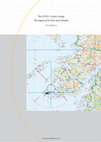
Deciphering the imagery of Icelandic myth.
In adition to known facts about the evolution of socia... more Deciphering the imagery of Icelandic myth.
In adition to known facts about the evolution of social structures, comes what may be read from the allegory of the conceptual background of the Sagas told in old Icelandic manuscripts.
Iceland was Christened by law in the year 1000. What hitherto were known facts, was banned by authorities. With Christianity came writing, and so did a specific literary device, the allegorical style. Allegory is a metaphor in which a character, place or event is used to deliver a broader message about real-world issues. Consequently it is not surprizing that a chieftain’s son in the last den of Pagan rites left in Europe, would find the urge to write down the science of his fathers in an allegorical tail to shelter it from authorities of the time.
Reading the epical Njálssaga with these glasses on, makes it all the more intriguing that its mythical occurances, places, and players, contour the archaic system which capsules the sermon of hallowing virgin land on the deltas of south Iceland – The Cosmic image.
This paper is about the root of the Icelandic literary heritage, the Cosmic image of Iona in the Hebrides.
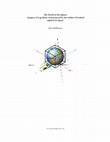
Petur Halldorsson, 2019
As the poet said; proportions subsequently fused with esthetics and thoughts which stir in the ps... more As the poet said; proportions subsequently fused with esthetics and thoughts which stir in the psyche and gradually assumed divine attributes.
Einar Pálsson studied the cosmology reflected in the Icelandic Sagas. He concluded that much of medieval Icelandic literature was esoteric, and permeated by Pythagorean and Platonic numerology.
The delta region of Rangárhverfi harbors a gigantic wheel of time which incorporates the kingdom of the ancient nordic concept of a Corn God. It was paced 216,000 feet in diameter, linked to the heavenly bodies, and key landmarks. The myth associated with the great wheel are related to primitive man’s food procurement, rooted in the great ancient southern cultures, in which religion dominated all aspects of life. Corn God kingdoms of Norway, Ireland, England, Denmark, and Sweden, can be traced to ancient Indo-European kingdoms and cultural communities in the Mediterranean region. It was likely that evidence of similar ideas of a Cosmic image would be found wherever ancient cultural communities were established.
The great images of creation, the sun watches, which Einar discov- ered in Iceland now are evident in many countries. All of them appear to have been measured in the same way and based on same principles
Einar was of one mind with 4th century’s St. Augustine of Hippo, who wrote: “Numbers are God’s thoughts.The divine wisdom and earthly structure rests on eternal numbers.”
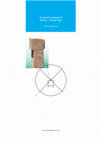
A proposed cosmology (Cosmic image) of Köbekli Tepe and Harran.
The Biblical Land between the riv... more A proposed cosmology (Cosmic image) of Köbekli Tepe and Harran.
The Biblical Land between the rivers streches from the shores of the Persian Gulf to the Turkish highland in the north. Its foothills may have been a hindrance for migrating tribes to the north, like the Pirenias, the Alps, and the Kaukasus, under which settlements evolved. The most prominent relics of the area, are some of the oldest stone edifices of mankind, Köbekli Tepe, with Harran 41 km to the south. Harran’s earliest records come from the Ebla tablets (3rd mill. BCE). The city’s hexagonal shape suggest it was a center, from a center it was common to pace a cosmology. A common measure of a Cosmic image diameter was 216000 feet (108000 x 2), around 66 km (2 x 33 km). The measure from Harran to the proposed North marker on the edge of the Cosmic image was the decisive measure of a Cosmic image’ radius 108000 Ayak or Kadem feet; 41.04 km to Köbekli Tepe.
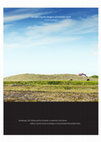
Is it possible to probe the meaning of myth and symbol and connect those to specific geodetic mea... more Is it possible to probe the meaning of myth and symbol and connect those to specific geodetic measure? - Yes. The programme introduced here is a research into the roots of Icelandic culture. Ideas connected with specific areas within societies are examined with a view to ascertain the relationship between them.
A ritual landscape had well defined dimensions. Because it was a mirror image of the heavenly order and acted as a time reckoning system, its most natural geometry was a circle, symbolic of the horizon and the Zodiac. The circle had spokes defined by the solar movement and the solstice lines aligned from its center. Prominent features like hills, rocks and river mouths were used as landmarks to fix the wheel-shaped cosmogram to the landscape. Traditional methods do not apply for this task, to find the shape of the sun watch and to decipher its imagery, I apply the working method of a landscape artist.









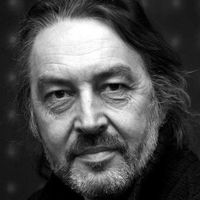

Uploads
Papers by PETUR HALLDORSSON
Certain structures tend to be built, and some decisive events tend to occur, at four sunrise and sunset horizon landmarks, and in the centre field, of every initial civil land survey. These sites tend to be spaced in the same pattern, inside and on the rim of a diameter of 216,000 feet (10.8 km), forming a cosmic image of space and time.
This paper is a story from the Po delta in north Italy with reference to the deltas of Thames, and south Iceland.
The Thames and Pó deltas were the choice stages for Shakespeare’s work; the South Iceland delta produced Sagas like the epic, Njáls saga, which describes events and allegoric tales between 960 and 1020 and survives in around 60 manuscripts.
From a specific vantage point people gazed at a certain hill on the delta’s south-west horizon where the winter solstice sunset was. Calendars were made according to it. Gothic kings and bishops lived on that hill.
Goðsögur Goðasteins "Fremstur þeirra sem voru þversum gegn kristnun var Runólfur goði Úlfsson faðir Úlfs og Valgarðs föðurs Marðar. Hann var undan Hrafni heimska og Haraldi hilditönn. Hof hans var í Fljótshlíðinni. Runólfur var faeddur árið 950, hann varð 65 ára gamall. Foreldrar hans voru Úlfur örgoði (Jörundarson goða, Hrafnssonar) og kona hans ónefnd, dóttir Vála Loðmundarsonar gamla í Sólheimum í Mýrdal. Runólfur maelti manna mest gegn kristnitökunni en var þó skírður. Hann bjó í Dal Undir Eyjafjöllum. Kona hans ónefnd var dóttir Þórðar gellis frá Hvammi í Dölum. Börn þeirra; Svertingur, Gellir og Þuríður sem átti Þorkel lögsögumann Tjörvason sonarson Þorgeirs Ljósvetningagoða.
Hexagon’s plan view becomes a 3D cube, when the 8th point behind 7th point is perceived (Fig 1).
Hebrew gematria reveals creation of heavens and earth as the volume of 2701, 3 x 3 x 3 +1. The Cube of Creation dimensions in a Cosmic image centre symbolises orientation, administrative centre, and World’s proportions in a human horizon as 36,000 x 36,000 feet. It is tempting to see the cube’s numbers as rising from the same root, as a key to the archetypal meaning of matter, energy, and nature themselves, and to see culture as an extension of nature. What one of the oldest Icelandic parchments Algorismus notes as the Cube of “stability and persistence”, deeply rooted in the psyche.
Through the centuries, nations staked claim to land through measurements and calculations based on a legacy of ancient tales, religious ideas and stars. These features served to connect people to their lands, to the motions of the firmament, and to higher powers.
Among the basic tools of the pagan system were angles, distances, and numbers themselves, in a base-12 numerical system involving 60. Among the key documents to unlock modern access to the integrative pagan survey system and world view, are the Icelandic sagas.
I propose the cosmology (cosmic image) of the Thames delta, was an orientation device and a system for counting days and seasons. It was a sun watch which was in use for thousands of years, and well into the christian era.
Það er margt sem bendir til þess að landnám á Íslandi og síðar kristnun hafi leitt af sér rit um heiðna siði.
Heimsmyndir líkt hverfðust um miðju. Frá miðju heimskringlu Egils Skallagrímssonar á vesturlandi var hægt að merkja bæði rómverska heimsmynd sem skiptir sjónhring í fjóra jafna hluta og keltneska heimsmynd árstíða. Heimsmyndirnar voru varðaðar helstu höfuðbólum Vesturlands.
In adition to known facts about the evolution of social structures, comes what may be read from the allegory of the conceptual background of the Sagas told in old Icelandic manuscripts.
Iceland was Christened by law in the year 1000. What hitherto were known facts, was banned by authorities. With Christianity came writing, and so did a specific literary device, the allegorical style. Allegory is a metaphor in which a character, place or event is used to deliver a broader message about real-world issues. Consequently it is not surprizing that a chieftain’s son in the last den of Pagan rites left in Europe, would find the urge to write down the science of his fathers in an allegorical tail to shelter it from authorities of the time.
Reading the epical Njálssaga with these glasses on, makes it all the more intriguing that its mythical occurances, places, and players, contour the archaic system which capsules the sermon of hallowing virgin land on the deltas of south Iceland – The Cosmic image.
This paper is about the root of the Icelandic literary heritage, the Cosmic image of Iona in the Hebrides.
Einar Pálsson studied the cosmology reflected in the Icelandic Sagas. He concluded that much of medieval Icelandic literature was esoteric, and permeated by Pythagorean and Platonic numerology.
The delta region of Rangárhverfi harbors a gigantic wheel of time which incorporates the kingdom of the ancient nordic concept of a Corn God. It was paced 216,000 feet in diameter, linked to the heavenly bodies, and key landmarks. The myth associated with the great wheel are related to primitive man’s food procurement, rooted in the great ancient southern cultures, in which religion dominated all aspects of life. Corn God kingdoms of Norway, Ireland, England, Denmark, and Sweden, can be traced to ancient Indo-European kingdoms and cultural communities in the Mediterranean region. It was likely that evidence of similar ideas of a Cosmic image would be found wherever ancient cultural communities were established.
The great images of creation, the sun watches, which Einar discov- ered in Iceland now are evident in many countries. All of them appear to have been measured in the same way and based on same principles
Einar was of one mind with 4th century’s St. Augustine of Hippo, who wrote: “Numbers are God’s thoughts.The divine wisdom and earthly structure rests on eternal numbers.”
The Biblical Land between the rivers streches from the shores of the Persian Gulf to the Turkish highland in the north. Its foothills may have been a hindrance for migrating tribes to the north, like the Pirenias, the Alps, and the Kaukasus, under which settlements evolved. The most prominent relics of the area, are some of the oldest stone edifices of mankind, Köbekli Tepe, with Harran 41 km to the south. Harran’s earliest records come from the Ebla tablets (3rd mill. BCE). The city’s hexagonal shape suggest it was a center, from a center it was common to pace a cosmology. A common measure of a Cosmic image diameter was 216000 feet (108000 x 2), around 66 km (2 x 33 km). The measure from Harran to the proposed North marker on the edge of the Cosmic image was the decisive measure of a Cosmic image’ radius 108000 Ayak or Kadem feet; 41.04 km to Köbekli Tepe.
A ritual landscape had well defined dimensions. Because it was a mirror image of the heavenly order and acted as a time reckoning system, its most natural geometry was a circle, symbolic of the horizon and the Zodiac. The circle had spokes defined by the solar movement and the solstice lines aligned from its center. Prominent features like hills, rocks and river mouths were used as landmarks to fix the wheel-shaped cosmogram to the landscape. Traditional methods do not apply for this task, to find the shape of the sun watch and to decipher its imagery, I apply the working method of a landscape artist.
Certain structures tend to be built, and some decisive events tend to occur, at four sunrise and sunset horizon landmarks, and in the centre field, of every initial civil land survey. These sites tend to be spaced in the same pattern, inside and on the rim of a diameter of 216,000 feet (10.8 km), forming a cosmic image of space and time.
This paper is a story from the Po delta in north Italy with reference to the deltas of Thames, and south Iceland.
The Thames and Pó deltas were the choice stages for Shakespeare’s work; the South Iceland delta produced Sagas like the epic, Njáls saga, which describes events and allegoric tales between 960 and 1020 and survives in around 60 manuscripts.
From a specific vantage point people gazed at a certain hill on the delta’s south-west horizon where the winter solstice sunset was. Calendars were made according to it. Gothic kings and bishops lived on that hill.
Goðsögur Goðasteins "Fremstur þeirra sem voru þversum gegn kristnun var Runólfur goði Úlfsson faðir Úlfs og Valgarðs föðurs Marðar. Hann var undan Hrafni heimska og Haraldi hilditönn. Hof hans var í Fljótshlíðinni. Runólfur var faeddur árið 950, hann varð 65 ára gamall. Foreldrar hans voru Úlfur örgoði (Jörundarson goða, Hrafnssonar) og kona hans ónefnd, dóttir Vála Loðmundarsonar gamla í Sólheimum í Mýrdal. Runólfur maelti manna mest gegn kristnitökunni en var þó skírður. Hann bjó í Dal Undir Eyjafjöllum. Kona hans ónefnd var dóttir Þórðar gellis frá Hvammi í Dölum. Börn þeirra; Svertingur, Gellir og Þuríður sem átti Þorkel lögsögumann Tjörvason sonarson Þorgeirs Ljósvetningagoða.
Hexagon’s plan view becomes a 3D cube, when the 8th point behind 7th point is perceived (Fig 1).
Hebrew gematria reveals creation of heavens and earth as the volume of 2701, 3 x 3 x 3 +1. The Cube of Creation dimensions in a Cosmic image centre symbolises orientation, administrative centre, and World’s proportions in a human horizon as 36,000 x 36,000 feet. It is tempting to see the cube’s numbers as rising from the same root, as a key to the archetypal meaning of matter, energy, and nature themselves, and to see culture as an extension of nature. What one of the oldest Icelandic parchments Algorismus notes as the Cube of “stability and persistence”, deeply rooted in the psyche.
Through the centuries, nations staked claim to land through measurements and calculations based on a legacy of ancient tales, religious ideas and stars. These features served to connect people to their lands, to the motions of the firmament, and to higher powers.
Among the basic tools of the pagan system were angles, distances, and numbers themselves, in a base-12 numerical system involving 60. Among the key documents to unlock modern access to the integrative pagan survey system and world view, are the Icelandic sagas.
I propose the cosmology (cosmic image) of the Thames delta, was an orientation device and a system for counting days and seasons. It was a sun watch which was in use for thousands of years, and well into the christian era.
Það er margt sem bendir til þess að landnám á Íslandi og síðar kristnun hafi leitt af sér rit um heiðna siði.
Heimsmyndir líkt hverfðust um miðju. Frá miðju heimskringlu Egils Skallagrímssonar á vesturlandi var hægt að merkja bæði rómverska heimsmynd sem skiptir sjónhring í fjóra jafna hluta og keltneska heimsmynd árstíða. Heimsmyndirnar voru varðaðar helstu höfuðbólum Vesturlands.
In adition to known facts about the evolution of social structures, comes what may be read from the allegory of the conceptual background of the Sagas told in old Icelandic manuscripts.
Iceland was Christened by law in the year 1000. What hitherto were known facts, was banned by authorities. With Christianity came writing, and so did a specific literary device, the allegorical style. Allegory is a metaphor in which a character, place or event is used to deliver a broader message about real-world issues. Consequently it is not surprizing that a chieftain’s son in the last den of Pagan rites left in Europe, would find the urge to write down the science of his fathers in an allegorical tail to shelter it from authorities of the time.
Reading the epical Njálssaga with these glasses on, makes it all the more intriguing that its mythical occurances, places, and players, contour the archaic system which capsules the sermon of hallowing virgin land on the deltas of south Iceland – The Cosmic image.
This paper is about the root of the Icelandic literary heritage, the Cosmic image of Iona in the Hebrides.
Einar Pálsson studied the cosmology reflected in the Icelandic Sagas. He concluded that much of medieval Icelandic literature was esoteric, and permeated by Pythagorean and Platonic numerology.
The delta region of Rangárhverfi harbors a gigantic wheel of time which incorporates the kingdom of the ancient nordic concept of a Corn God. It was paced 216,000 feet in diameter, linked to the heavenly bodies, and key landmarks. The myth associated with the great wheel are related to primitive man’s food procurement, rooted in the great ancient southern cultures, in which religion dominated all aspects of life. Corn God kingdoms of Norway, Ireland, England, Denmark, and Sweden, can be traced to ancient Indo-European kingdoms and cultural communities in the Mediterranean region. It was likely that evidence of similar ideas of a Cosmic image would be found wherever ancient cultural communities were established.
The great images of creation, the sun watches, which Einar discov- ered in Iceland now are evident in many countries. All of them appear to have been measured in the same way and based on same principles
Einar was of one mind with 4th century’s St. Augustine of Hippo, who wrote: “Numbers are God’s thoughts.The divine wisdom and earthly structure rests on eternal numbers.”
The Biblical Land between the rivers streches from the shores of the Persian Gulf to the Turkish highland in the north. Its foothills may have been a hindrance for migrating tribes to the north, like the Pirenias, the Alps, and the Kaukasus, under which settlements evolved. The most prominent relics of the area, are some of the oldest stone edifices of mankind, Köbekli Tepe, with Harran 41 km to the south. Harran’s earliest records come from the Ebla tablets (3rd mill. BCE). The city’s hexagonal shape suggest it was a center, from a center it was common to pace a cosmology. A common measure of a Cosmic image diameter was 216000 feet (108000 x 2), around 66 km (2 x 33 km). The measure from Harran to the proposed North marker on the edge of the Cosmic image was the decisive measure of a Cosmic image’ radius 108000 Ayak or Kadem feet; 41.04 km to Köbekli Tepe.
A ritual landscape had well defined dimensions. Because it was a mirror image of the heavenly order and acted as a time reckoning system, its most natural geometry was a circle, symbolic of the horizon and the Zodiac. The circle had spokes defined by the solar movement and the solstice lines aligned from its center. Prominent features like hills, rocks and river mouths were used as landmarks to fix the wheel-shaped cosmogram to the landscape. Traditional methods do not apply for this task, to find the shape of the sun watch and to decipher its imagery, I apply the working method of a landscape artist.